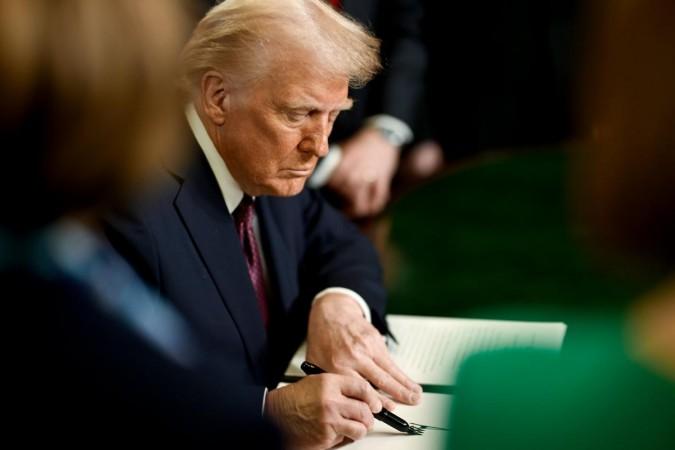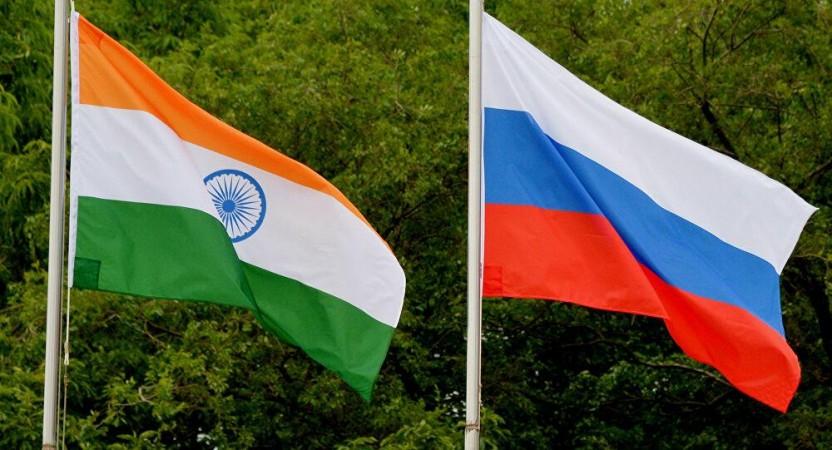
On July 30, 2025, U.S. President Donald Trump announced a 25 percent tariff on India's 177 billion dollars in exports to the U.S., 87 billion dollars in goods and 90 billion dollars in IT services, coupled with a penalty on 49 billion dollars in Russian oil and 3 billion dollars in military imports, effective August 1. This audacious policy, targeting India's 41 billion dollar trade surplus and its strategic reliance on Russian energy, threatens to impose 57 billion dollars to 96 billion dollars in costs, endangering 1 million jobs and shaving 0.2 to 0.9 percent (6 billion dollars to 36 billion dollars) from India's 4 trillion dollar economy. Yet, India's 24 billion dollars in annual savings from discounted Russian oil, 700 billion dollars in foreign exchange reserves, and its pivotal role in the Quad alliance present an extraordinary opportunity.
This op-ed crafts a visionary, financially rigorous, and strategically bold blueprint for India to transform this challenge into a defining moment of economic resilience, geostrategic mastery, sustainable innovation, and defense technology leadership, positioning India as a global exemplar of adaptive ascendancy.
The Economic Maelstrom: A Precise Financial Calculus
The U.S. tariffs levy a 44 billion dollar burden: 23 billion dollars on IT services (90 billion dollar exports), 1 billion dollars on agriculture (4 billion dollars), 3 billion dollars on electronics (13 billion dollars), 2 billion dollars on auto parts (7 billion dollars), 2 billion dollars on textiles (10 billion dollars), and 3 billion dollars on related sectors (gems/jewelry: 9 billion dollars, marine products: 1 billion dollars, processed foods: 1 billion dollars).
A projected 3 to 15 percent export decline translates to 6 billion dollars in losses (IT: 3 billion dollars, agriculture: 1 billion dollars, electronics: 2 billion dollars, auto parts: 1 billion dollars, textiles: 1 billion dollars, others: 0 billion dollars), reducing India's 131 billion dollar U.S. trade surplus to 114 billion dollars. A 5 to 10 percent rupee depreciation could inflate 140 billion dollars in oil import costs by 7 billion dollars to 14 billion dollars, while penalties on 52 billion dollars in Russian trade range from 13 billion dollars (25 percent) to 52 billion dollars (100 percent).
This threatens a GDP loss of 6 billion dollars to 36 billion dollars, with 1 million jobs at risk: 162,000 in IT (5 million total), 1 million farmers facing 250 dollar to 500 dollar income losses, 60,000 in electronics (2 million total), 100,000 in auto parts (5 million total), 1 million in textiles (45 million total, 70 percent women), and 220,000 in related sectors.
MSMEs, driving 40 percent of manufacturing and 60 percent of exports, face 5 billion dollars to 7 billion dollars in revenue losses, risking industrial collapse in Gujarat, Tamil Nadu, and Maharashtra. India's response must be surgically precise, leveraging its 700 billion dollars in reserves to absorb shocks while catalyzing long-term growth.
Russian Oil: A Strategic Asset Under Fire
India's 24 billion dollars in savings from Russian oil, secured at a 33 percent discount (49 billion dollars vs. 73 billion dollars at 90 dollars per barrel Brent crude), underpins 35 percent of its 5 million barrels per day demand, stabilizing fuel prices, curbing inflation (0.4 percent per 10 dollar per barrel hike), and funding 50 billion dollars in agricultural subsidies and 1 trillion dollars in infrastructure.
However, penalties of 13 billion dollars to 52 billion dollars threaten to erase these gains, straining 700 billion dollars in reserves and jeopardizing 3 billion dollars in U.S. defense deals, such as Predator drones. Geopolitically, India's Russian ties risk alienating Quad partners while pushing it toward BRICS, potentially limiting access to the 600 billion dollar U.S. market. India must preserve this energy lifeline while deftly navigating global alliances, using its economic heft and strategic positioning to mitigate risks and unlock opportunities.
India's Global Chessboard: Strengths and Vulnerabilities
India's 25 percent tariff is less severe than China's 54 percent (136 billion dollars on 400 billion dollar exports), but its 4 trillion dollar GDP is dwarfed by China's 18 trillion dollar resilience. Vietnam's 15 percent tariff (15 billion dollars on 100 billion dollar exports) and Bangladesh's 10 to 15 percent textile tariffs challenge India's 28 percent U.S. market share, risking 2 billion dollars to 3 billion dollars in textiles alone.
The EU's 20 percent tariff and diversified energy (LNG, renewables) reduce its exposure, while India's 20 percent GDP export dependence and Russian reliance amplify risks. Yet, India's 700 billion dollar reserves, 8 to 20 percent cost advantage in electronics and textiles, and Quad membership provide unmatched leverage. Unlike Vietnam's niche agility or Bangladesh's textile focus, India's scale, 1.4 billion people, 4 trillion dollar economy, positions it to reshape global trade dynamics, provided it pivots with strategic clarity and boldness.

A Visionary Arc: Five Pillars of Transformation
India's response must transcend mitigation, igniting a renaissance through five pillars: economic fortress, energy metamorphosis, geopolitical orchestration, sustainable trailblazing, and deftech sovereignty. This framework integrates financially grounded actions with visionary ambition, ensuring India not only survives but thrives. By blending immediate relief with long-term innovation, India can save 30 billion dollars to 45 billion dollars, preserve 1 million jobs, and cement its role as a global economic and strategic powerhouse.
Building an Economic Fortress
To shield its 177 billion dollar export engine, India must secure a 2025 trade agreement, offering 4 billion dollars in U.S. agricultural and dairy market access to exempt IT (90 billion dollars) and pharmaceuticals (20 billion dollars), saving 25 billion dollars in tariffs. A 3 billion dollar MSME stabilization fund offsets 3 billion dollars in losses across electronics, auto parts, and textiles, preserving 1 million jobs in industrial hubs.
This 7 billion dollar investment yields 28 billion dollars in benefits, stabilizing the 114 billion dollar trade surplus and mitigating 6 billion dollars to 36 billion dollars in GDP losses. By leveraging 700 billion dollars in reserves, India can absorb the 44 billion dollar tariff shock, ensuring 7 percent GDP growth and reinforcing MSMEs as the backbone of 40 percent of manufacturing and 60 percent of exports. This pillar transforms economic vulnerability into enduring strength, safeguarding livelihoods and industrial capacity.
Catalyzing an Energy Metamorphosis
India's energy strategy must preserve 15 billion dollars to 20 billion dollars in Russian oil savings while reducing 80 percent oil dependence. By cutting Russian imports by 12 percent (6 billion dollars) by 2027 and sourcing from U.S. or Gulf states at a 2 billion dollar cost, India neutralizes 13 billion dollars to 52 billion dollars penalties. A 3 billion dollar investment in green hydrogen, offshore wind, and small modular reactors targets 18 percent renewable energy by 2032, saving 35 billion dollars on 140 billion dollar oil imports.
This 5 billion dollar strategy delivers 50 billion dollars in benefits, ensuring 5 million barrels per day supply and curbing inflation. By aligning with global decarbonization trends, India supports 1 trillion dollars in infrastructure and positions itself as a leader in the energy transition, balancing security with sustainability.
Orchestrating Geopolitical Mastery
India's geopolitical strategy must balance Quad and BRICS to secure concessions and diversify trade. A 2 billion dollar investment in Quad tech collaborations, AI, quantum computing, and cybersecurity, can waive 13 billion dollar penalties, reinforcing ties with the U.S., Japan, and Australia.
Simultaneously, redirecting 15 billion dollars in exports to ASEAN, Africa, and Latin America, backed by 2 billion dollars in trade hubs, leverages 48 billion dollars in agri-exports and 150 billion dollars in IT exports to generate 8 billion dollars in new revenue. This 4 billion dollar strategy yields 21 billion dollars, offsetting 6 billion dollars in U.S. export losses. By positioning itself as a global pivot, India counters China's 18 trillion dollar dominance while maintaining nonalignment, ensuring access to both Western and Global South markets.
Trailblazing a Sustainable Future
Sustainability is India's moral and economic imperative. A 2 billion dollar investment in precision agriculture, drones, IoT, and satellite monitoring, cuts 10 billion dollars to 15 billion dollars in post-harvest losses, bolstering 1 million farmers and 16 percent of GDP. Another 2 billion dollars in green infrastructure, EV charging networks and battery recycling, drives 15 billion dollars in clean-tech growth, aligning with 1 trillion dollar infrastructure goals. This 4 billion dollar strategy delivers 25 billion dollars, enhancing food security and net-zero ambitions. By prioritizing rural economies and clean energy, India sets a global benchmark for sustainable development, ensuring resilience for its 1.4 billion citizens while appealing to environmentally conscious markets.
Forging Deftech Sovereignty
India must transition from 3 billion dollars in Russian military imports to self-reliance by 2030, investing 2 billion dollars in indigenous systems like hypersonic missiles and AI-driven drones, and 2 billion dollars in U.S. systems like missile defense platforms. This 4 billion dollar strategy saves 3 billion dollars in imports and fuels 5 billion dollars in growth for the 70 billion dollar defense market, securing 3 billion dollars in U.S. deals. By enhancing Quad interoperability and building domestic capabilities, India strengthens national security and positions itself as a defense technology leader, reducing geopolitical risks while amplifying its strategic influence.
Deploying a Strategic BATNA
India's best alternative to a negotiated agreement (BATNA) is a dynamic lever. Scaling rupee-rouble trade saves 3 billion dollars, while redirecting 15 billion dollars in exports to EU and ASEAN with 2 billion dollars in trade infrastructure negotiates penalties down to 8 percent (4 billion dollars) from 25 percent (13 billion dollars). This 2 billion dollar investment yields 12 billion dollars, diversifying the 177 billion dollar export base. By signaling robust alternatives, India strengthens its negotiating stance, ensuring flexibility and resilience in a volatile global trade environment.
An Economic Reset
India's 24 billion dollars in Russian oil savings is a vital lifeline, but the 44 billion dollars in U.S. tariffs and 13 billion dollars to 52 billion dollars in penalties threaten 1 million jobs and 6 billion dollars to 36 billion dollars in GDP. Through an economic fortress, energy metamorphosis, geopolitical mastery, sustainable trailblazing, and deftech sovereignty, India can save 30 billion dollars to 45 billion dollars, preserve its 114 billion dollar trade surplus, and redefine its global role. With 700 billion dollars in reserves and a 1.4 billion-strong market, India must seize this moment to forge a legacy of resilience, innovation, and leadership, rising as a beacon of adaptive ascendancy in an uncertain world.
[Major General Dr. Dilawar Singh, IAV, is a distinguished strategist having held senior positions in technology, defence, and corporate governance. He serves on global boards and advises on leadership, emerging technologies, and strategic affairs, with a focus on aligning India's interests in the evolving global technological order.]








